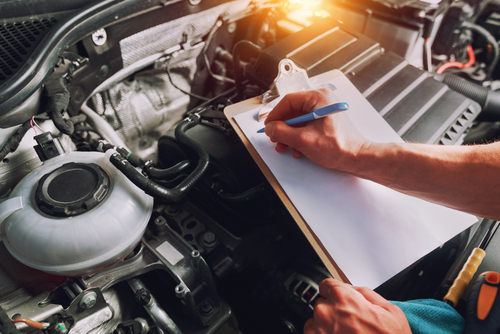Car care guarantees durability and road safety. While experienced mechanics can make difficult repairs, you can maintain your car yourself. This authoritative 2024 DIY car maintenance guide covers everything from simple inspections to complex repairs to help you maintain your vehicle.
The importance of DIY car maintenance
The cost of owning a car is higher than the cost of purchasing it. Regular maintenance saves you a lot of money. Understanding how your car works and being able to fix it yourself will give you more power.
Easy car maintenance
Check and top up with liquid engine oil: lubricates moving parts and prevents wear. Check and top up your car’s engine oil as directed in your manual.
Coolant prevents the engine from overheating. When the engine is cold, check the coolant level and add water if necessary.
Brake fluid is essential for good braking. Check the brake fluid level and add if necessary, but pay attention to leaks.
Transmission fluid is needed for smooth shifting. Your car’s owner’s manual explains how to check and refill transmission fluid.
tire care
Check tire pressure: Correct tire pressure maximizes fuel economy and lifespan. Check the tire pressure regularly, especially before long journeys, with a pressure gauge.
Tire rotation: Tire rotation can evenly distribute the wear and extend its service life. Turn according to car manual.
Tire tread depth: A lower tread depth reduces grip in wet or snowy weather. Use a gauge to check tread depth to meet minimum standards.
Good car maintenance
Tools needed to change your oil and filter: You will need a socket wrench, oil filter wrench, drain pan, and new oil and filter to change them.
Guided steps:
Drain the old oil: Place the oil pan under the drain plug and remove it to drain.
Replace the oil filter: Use a wrench to remove and replace the oil filter.
Adding new oil: Use a funnel to add the correct amount and type of new oil to the engine.
Replace air filter
Types of Air Filters: Engine and cabin air filters are the main types. Air quality and engine performance depend on both.
To make a replacement yourself:
Your car’s manual will tell you where to find the air filter housing, usually under the hood for the engine air filter and under the glove box for the cabin air filter.
Remove the old filter: Open the housing and carefully remove the old air filter.
Install the new filter: Make sure the new filter is installed in the housing.
Close the housing tightly to prevent dirt from entering.
Maintain the battery
Check the battery terminals for corrosion or loose connections. Clean them with a wire brush and tighten loose connections to make a reliable electrical connection.
Clean battery terminals: Corrosion can disrupt the flow of electricity. Use baking soda and water to clean the terminal and prevent corrosion.
Battery status: Check the battery voltage with a multimeter. The voltage of a healthy battery should be within the manufacturer’s range.
Improve car maintenance
Inspection and maintenance of brakes
Signs of brake wear: Brake wear can manifest itself in squeaking, grinding noises, a soft brake pedal or vibrations. Check your brakes regularly and correct any problems.
Replacing brake pads:
Lift the car using a jack and jack stands.
Loosen the lug nuts and remove the wheel to access the brake caliper.
Replacing brake pads: Replace old brake pads with new ones according to your car’s manual.
Put the wheels back on, lower the car and test the brakes to make sure they are working properly.
Over time, brake fluid can become contaminated and lose its effectiveness. Flush the brake fluid regularly to optimize performance.
Spark plug replacement
Symptoms of Bad Spark Plugs: Worn spark plugs can cause misfire, poor idling and engine starting problems.
DIY replacement:
The spark plug is usually located at the top of the engine. Consult your car’s manual.
Remove old spark plugs: Use a socket wrench and ratchet to remove outdated spark plugs.
Install a new spark plug: Carefully install a new spark plug and torque it to the manufacturer’s specifications.
Try the Engine: To test a new spark plug, start the engine and listen for smooth running.
Be prepared for emergencies
Basic first aid kit
A basic first aid kit should include bandages, antiseptic wipes, gauze pads, tape, scissors and gloves. These materials are needed for minor injuries5,000–7,500 miles.
Why is changing tires important?
Tire rotation ensures even wear, extending tire life and improving vehicle performance. It also improves handling and traction, especially in front- or rear-wheel drive cars.
When should you replace your car’s air filter?
The engine air filter should be replaced every 12,000 to 15,000 miles, or according to your vehicle’s maintenance schedule. Restricted airflow caused by a clogged air filter can reduce engine performance and fuel economy.
What should I do if my brakes make noise?
If you hear any unexpected noises or changes in performance, a qualified technician should test your brakes immediately. Ignoring braking problems can lead to more serious problems and endanger road safety.
Should I check my car’s battery often?
Check your car’s battery regularly, especially on long journeys or in bad weather. Automotive experts recommend checking your battery every three to six months for corrosion or wear.

